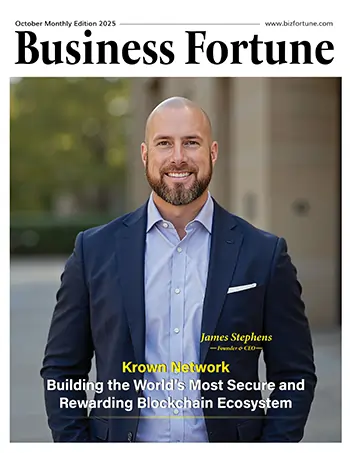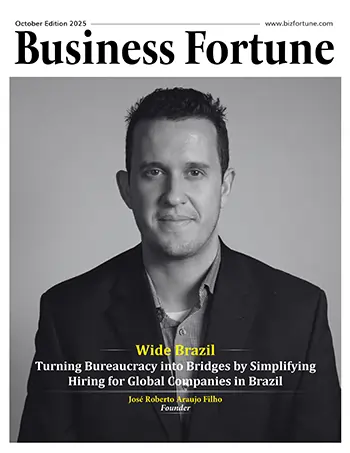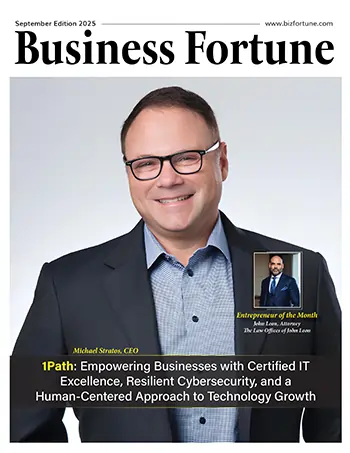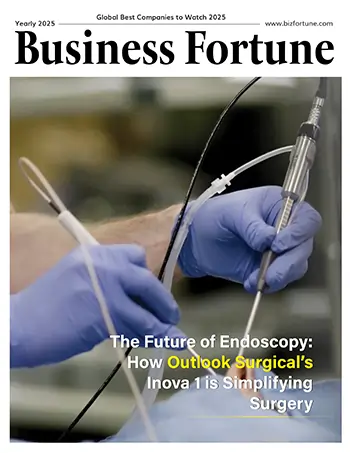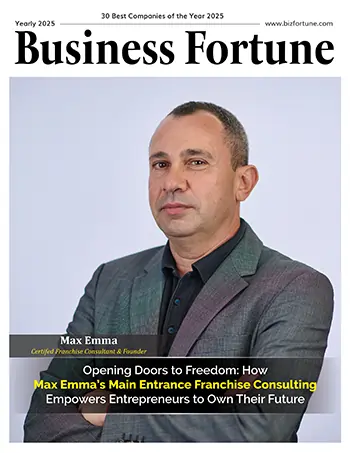30 Best Companies of the Year 2025
Business Fortune
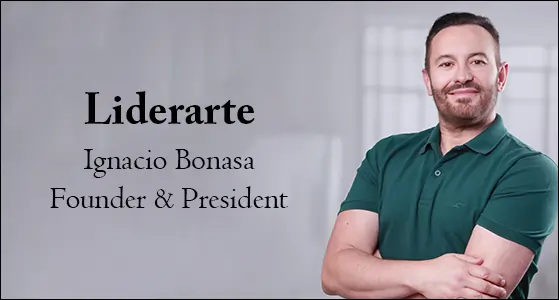
Some decisions are guided by intellect, others by emotion, but the most impactful ones arise from the soul. Ignacio Bonasa had a distinguished career in executive banking, serving as General Director at Caja Rural de Aragón, President of BBVA Dinero Express, and CEO of BBVA Portugal. His name was synonymous with strategy, results, and corporate leadership. However, he felt a deep calling for change within himself.
This was not an impulsive decision or a result of a crisis; it was a profound transformation.
Today, Ignacio Bonasa leads a movement that is redefining talent development on a global scale: Liderarte. This organization combines art, emotion, and purpose-driven leadership. Additionally, he serves as President of three international associations: the European Association for Wellbeing, the European Association of Soulful Organizations, and the International Association "Dale la vuelta a la tortilla."
In this exclusive interview with The Business Fortune, Ignacio opens up about his journey from power to purpose, his groundbreaking methodology based on the 4A model, and the unwavering belief that true change starts from within.
Interview Highlights
From Success to Meaning: A Life-Changing Turn with Purpose
Ignacio, you made a radical shift—leaving a prestigious banking career to focus on “talent through art.” What was that turning point like, and what led you to create Liderarte?
It was more than a professional change—it was a profound inner transformation. For over two decades, I lived fully immersed in the financial world. I had what many would consider a dream career: leading major teams, managing millions, and representing BBVA in multiple countries. But I began to feel that something essential was missing. So much structure, yet little essence. So much doing, but so little being.
One evening in Zaragoza, after an intense day, I stood in front of a mirror and asked myself: “Is this it?” I realized I had achieved almost everything I had once aspired to—except for the most important thing: being true to my soul.
So I stopped. Not to run away, but to realign.
I returned to Spain and began an inner journey. Art—especially theater, music, and poetry—offered me the mirror I had long been missing. It awakened what had been dormant inside me. That was the seed of what is now Liderarte.
Liderarte didn’t emerge as just another training company. It was the expression of my own reinvention. A space where I could integrate what I had been (a strategist, an executive, a decision-maker) with what I was becoming: a facilitator of awareness, a creative leader, a transformer of cultures through art. I didn’t leave leadership—I changed where I was leading from.
“Dale la vuelta” and “Resetéate”: Two Battle Cries of Reinvention
The programs “Dale la vuelta a la tortilla” and “Resetéate” stand out from the moment you hear them. What emotions do you want people to feel when they encounter these metaphors, and how do they reflect your personal transformation?
I want people to realize that change is possible, that falling does not define your life, and that pain can fuel your journey. "Dale la vuelta a la tortilla," which has evolved into a global social movement, encourages individuals to rewrite their stories. While you may not have control over what happens to you, you can choose how to interpret those experiences. This simple yet profoundly revolutionary idea can shift perspectives.
Resetéate is an experiential program that embodies this philosophy. It guides individuals through a process of personal reconnection across four dimensions: body, mind, emotion, and transcendence. The program helps remove limiting beliefs, reawaken inner clarity, and activate a new way of living. Both initiatives originated from my own journey—falling and then finding a way to rise again, not through clichés, but with method, awareness, and genuine care.
These are not merely products; they are paths—inviting others to reclaim control over the direction of their lives.
A Formula That Changes Everything: (C × C × C)^Art
Your formula Capacidad × Compromiso × Contexto raised to the power of Art—(C × C × C)^Art—is a core pillar of your methodology. How is it interpreted and applied in your programs?
It’s more than a formula. It’s a way of understanding human performance and transformation within organizations. My years in executive roles taught me that talent alone doesn’t guarantee results. I saw extraordinarily skilled people who weren’t thriving—and others with less apparent ability who shined. What made the difference? The interplay of three key elements: capacity, commitment, and context.
-
Capacity is the know-how: skills, experience, knowledge.
-
Commitment is the emotional engagement: motivation, alignment, and energy.
-
Context is the surrounding environment: leadership style, organizational culture, relationships, and systems.
When the three Cs align, potential becomes performance. My approach elevates this equation with Art, which multiplies the effect through transformation rather than decoration. Art reaches beyond logic; it evokes and reveals. By incorporating art—such as theater, music, and storytelling—into learning, we foster emotional resonance that leads to insight and lasting change. Our programs begin by assessing the three Cs, followed by crafting an artistic experience that serves as a mirror, resulting in individuals who rediscover themselves, teams that reconnect, and vibrant cultures.
Theater, Mentalism, and Painting: Art as a Mirror for Leadership
You use mentalism, theater, and speed painting in your programs. Why these format, and what learning outcomes do they create?
Art breaks patterns and bypasses defenses by inviting truth. These artistic expressions are not just ornamental; they are functional, emotional, and strategic.
Theater allows us to express what is difficult to articulate. Through symbolic scenes or real-time improvisations, teams can observe their own dynamics reflected back to them. We've even established programs like the Creative Theater League, where teams create short plays to represent their cultural challenges. What unfolds on stage often reveals more about their situation than any survey could.
When used responsibly, mentalism becomes a tool for awareness. When a leader realizes how easily perception and attention can be influenced, they become more mindful of their own leadership style. It encourages ethical influence and fosters humble listening.
Speed painting helps individuals let go of perfectionism and reconnect with their creative instincts. In just ten minutes, someone who has never held a brush can visually express their leadership values, team dynamics, or even their internal struggles. When they explain their painting to others, something powerful occurs: vulnerability fosters connection.
Art does not simply entertain; it exposes. When we dare to confront what is revealed, we open the door to deep, lasting transformation.
When the World Doubts You, Let Your Purpose Speak Louder
Art and learning aren’t always easily understood in the corporate world. What was the most difficult moment you faced, and how did you overcome it?
There were several, but one stands out clearly: the beginning. I came from leading banks, from wearing suits and managing strategy at the highest level. And suddenly, I was talking about emotion, soul, and art to companies rooted in metrics and efficiency. I could feel the skepticism. I often heard: “This sounds nice, but what does it do for our bottom line?”
That was tough. Because it wasn’t just about presenting a new method—it was about defending a new identity. It wasn’t just a new service. It was a new version of me. And that doesn’t get sold—it gets embodied.
Another challenging time came during the COVID-19 pandemic. Training sessions were canceled, events were postponed, and many clients paused their projects. But it was also an opportunity to evolve. We adapted experiences to online formats, launched creative initiatives like Gym Creativo and a digital version of Resetéate, and focused on emotional connection at a time when everyone was feeling vulnerable. We didn’t just survive—we grew.
But the hardest part, honestly, was letting go of an identity that had brought me success for so many years. Reinventing myself meant giving up certainty. And I got through it with one compass: purpose. That, and the people who believed in this vision from the start—my partners, my daughters, my mentors.
Leading with Art: Learning That Must Be Lived, Not Just Taught
As Founder&President, do you personally apply the methods you teach? How do art and emotional awareness influence your leadership style?
Every single day. Because I can’t ask others for authenticity if I don’t lead from that same place. I can’t speak of my soul without staying connected to mine. What we teach isn’t theory—it’s a way of living.
My mornings don’t start with email but with silence. I paint, write, and listen to opera. A guiding phrase for me is, “I can’t change the direction of the wind, but I can adjust my sails,” reminding me that life is about navigating with presence.
Leading with art has taught me to inspire rather than impose, making decisions from clarity instead of urgency. At Liderarte, each partner leads their own vision, embodying the idea that true leadership awakens rather than commands.
I still make mistakes and occasionally slip into urgency or perfectionism, but I have tools to pause, realign, and come back to myself, which is an essential act of leadership.
A Life with Direction: From Success to Meaning
Ignacio Bonasa is a leader who transformed his own life to help others transform theirs. He began his professional career in banking, where he held top executive positions: General Director at Caja Rural de Aragón, President of BBVA Dinero Express, and CEO of BBVA Portugal. After more than two decades in corporate leadership, he chose to reinvent himself and founded Liderarte, a pioneering organization dedicated to developing people, teams, and organizations through the power of art and soul-driven leadership.
He currently presides over three international associations: the European Association for Wellbeing, the European Association of Soulful Organizations, and the International Association “Dale la vuelta a la tortilla”, a global movement that transforms pain into soul-nourishing growth.
He is the author of The Recipe for Wellbeing and is currently working on three more titles: Organizations with Soul, Learning Through Art and the 4A Model, and Dale la vuelta a la tortilla. Recognized as one of the 10 Best CEOs and Most Influential Talent Management Leaders of 2025, he holds Honorary Doctorates from several Latin American universities and a Doctorate in Leadership and Organizational Transformation from the European International University. He describes himself as a soul in motion, a feliciologist, and an alchemist of purpose-driven leadership.















